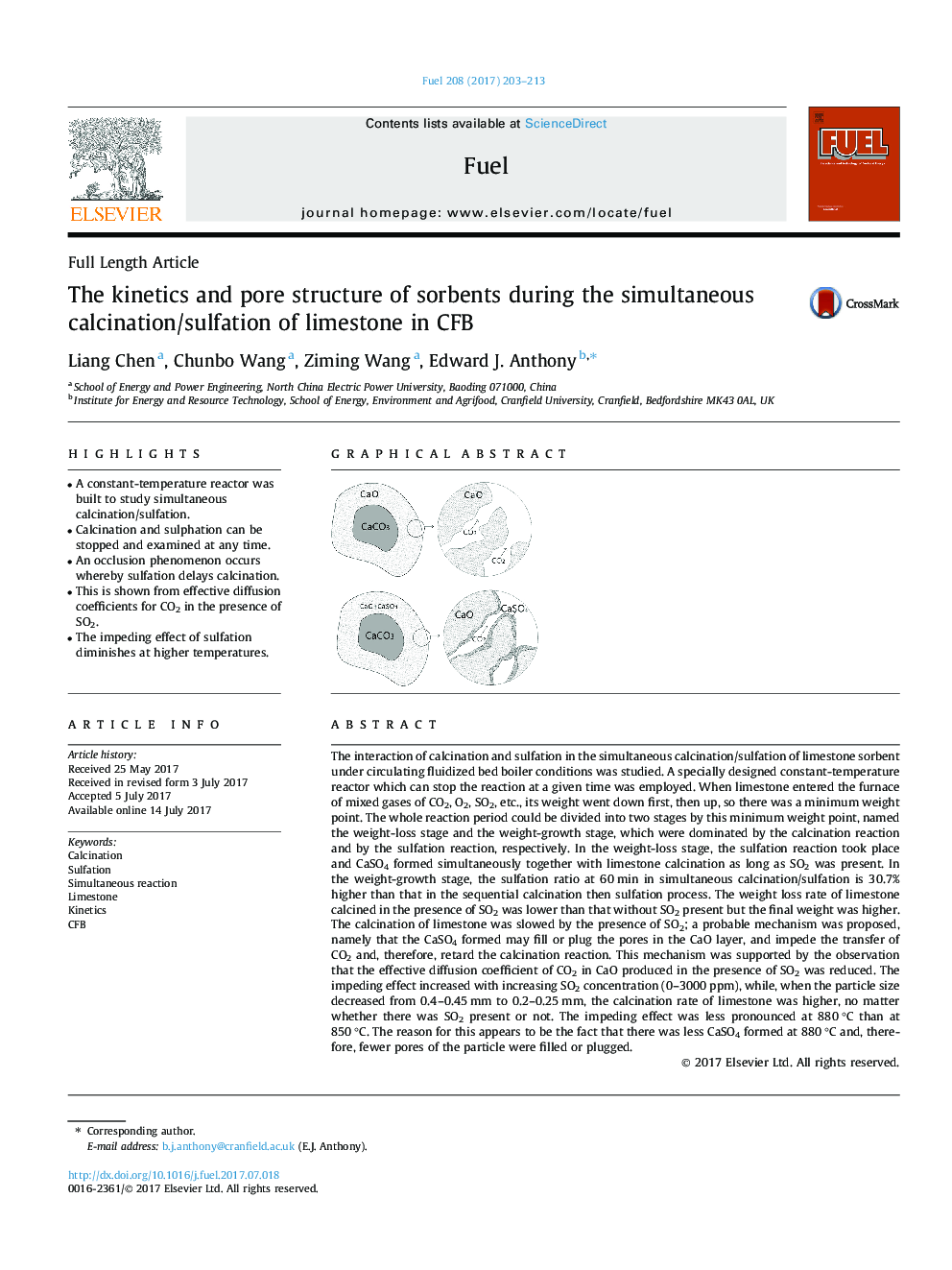| کد مقاله | کد نشریه | سال انتشار | مقاله انگلیسی | نسخه تمام متن |
|---|---|---|---|---|
| 6474083 | 1424956 | 2017 | 11 صفحه PDF | دانلود رایگان |

- A constant-temperature reactor was built to study simultaneous calcination/sulfation.
- Calcination and sulphation can be stopped and examined at any time.
- An occlusion phenomenon occurs whereby sulfation delays calcination.
- This is shown from effective diffusion coefficients for CO2 in the presence of SO2.
- The impeding effect of sulfation diminishes at higher temperatures.
The interaction of calcination and sulfation in the simultaneous calcination/sulfation of limestone sorbent under circulating fluidized bed boiler conditions was studied. A specially designed constant-temperature reactor which can stop the reaction at a given time was employed. When limestone entered the furnace of mixed gases of CO2, O2, SO2, etc., its weight went down first, then up, so there was a minimum weight point. The whole reaction period could be divided into two stages by this minimum weight point, named the weight-loss stage and the weight-growth stage, which were dominated by the calcination reaction and by the sulfation reaction, respectively. In the weight-loss stage, the sulfation reaction took place and CaSO4 formed simultaneously together with limestone calcination as long as SO2 was present. In the weight-growth stage, the sulfation ratio at 60 min in simultaneous calcination/sulfation is 30.7% higher than that in the sequential calcination then sulfation process. The weight loss rate of limestone calcined in the presence of SO2 was lower than that without SO2 present but the final weight was higher. The calcination of limestone was slowed by the presence of SO2; a probable mechanism was proposed, namely that the CaSO4 formed may fill or plug the pores in the CaO layer, and impede the transfer of CO2 and, therefore, retard the calcination reaction. This mechanism was supported by the observation that the effective diffusion coefficient of CO2 in CaO produced in the presence of SO2 was reduced. The impeding effect increased with increasing SO2 concentration (0-3000 ppm), while, when the particle size decreased from 0.4-0.45 mm to 0.2-0.25 mm, the calcination rate of limestone was higher, no matter whether there was SO2 present or not. The impeding effect was less pronounced at 880 °C than at 850 °C. The reason for this appears to be the fact that there was less CaSO4 formed at 880 °C and, therefore, fewer pores of the particle were filled or plugged.
76
Journal: Fuel - Volume 208, 15 November 2017, Pages 203-213